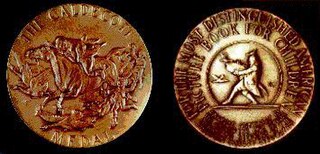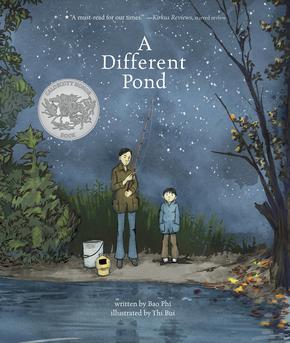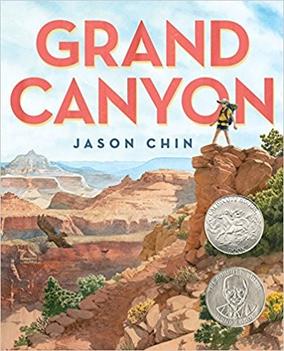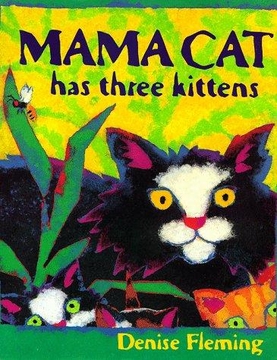
The Randolph Caldecott Medal, frequently shortened to just the Caldecott, annually recognizes the preceding year's "most distinguished American picture book for children". It is awarded to the illustrator by the Association for Library Service to Children (ALSC), a division of the American Library Association (ALA). The Caldecott and Newbery Medals are considered the most prestigious American children's book awards. Besides the Caldecott Medal, the committee awards a variable number of citations to runners-up they deem worthy, called the Caldecott Honor or Caldecott Honor Books.

The Hello, Goodbye Window is a children's picture book written by Norton Juster and illustrated by Chris Raschka. Published in 2005, the book tells the story of a little girl who enjoys visiting her grandparents. Raschka won the 2006 Caldecott Medal for his illustrations.

The Egg Tree is a 1950 book by Katherine Milhous that won the 1951 Caldecott Medal. It is based on the author's family tradition and tells the classic tale of a Pennsylvania Dutch Easter, with its main characters being Katy and Carl. One day, near Easter, they look for Easter eggs and found eggs that their grandmother had painted on a tree. They are interested, so they ask their grandmother about the eggs. They eventually create one, and it becomes a big success the next Easter.

A Ball for Daisy is a 2011 children's wordless picture book written and illustrated by Chris Raschka. The book tells the story of a dog named Daisy, who has a beloved ball destroyed and then replaced. Raschka won the 2012 Caldecott Medal for his illustrations in the book. The creation of the book took years but was praised for its ability to evoke emotion in the reader. A sequel, Daisy Gets Lost, was released in 2013.

Locomotive is a 2013 children's book written and illustrated by Brian Floca. A non-fiction book written primarily in free verse, the book follows a family as they ride a transcontinental steam engine train in summer of 1869. The book details the workers, passengers, landscape, and effects of building and operating the first transcontinental railroad. The book also contains prose about the earlier and later history of locomotives. The book took Floca four years to create, which included a change in perspective from following the crew of the train to following a family. Floca conducted extensive research including his own train ride and consultation with experts to ensure he had the details all correct.

This Is Not My Hat is a 2012 American children's picture book by the author and illustrator Jon Klassen. The story is told through the unreliable narration of a little fish, who has stolen a hat from a big fish and how the big fish reacts to the theft. It is a thematic follow-up to I Want My Hat Back (2011) and was meant to be a more literal sequel until Klassen took a suggestion to change which animals were in the story. The book was well received by critics, who praised its dark or ironic humor which could only be understood by comparing the words of the little fish's narration against the events of the illustrations. In addition to several positive reviews, Klassen received the 2013 Caldecott Medal and the 2014 Kate Greenaway Medal, making This is Not My Hat the first book to win both awards. This is Not My Hat was also a commercial success.

Rikki-Tikki-Tavi is a 1997 retelling of Rudyard Kipling's classic story by Jerry Pinkney about a mongoose that protects a family from two cobras. The book won a Caldecott honor in 1998 for its illustrations.

Ma Dear's Aprons is a 1997 book by Patricia McKissack about the relationship between a son, David Earl, and his mother, Ma dear.

Radiant Child: The Story of Young Artist Jean-Michel Basquiat is a 2016 picture book biography by Javaka Steptoe about Jean-Michel Basquiat. Using a style similar to Basquiat's, the book tells the story of his childhood and early career. It won the 2017 Caldecott Medal and Coretta Scott King Illustrator Award for its illustrations.

Wolf in the Snow is a 2017 wordless picture book by Matthew Cordell. The book was favorably received by critics and won the 2018 Caldecott Medal. The story has drawn comparisons to fairy tales like Little Red Riding Hood. The nearly wordless book tells the story of a girl and wolf who each get lost in the snowstorm. Cordell used distinctive illustration techniques for the girl and the wolf.

5 Little Ducks is a 2016 children's picture book by Caldecott Honor recipient Denise Fleming based on the nursery rhyme of the same name.

Crown: An Ode to the Fresh Cut is a 2017 picture book by Derrick Barnes, illustrated by Gordon C. James. The book, Barnes' first picture book, is a poem describing a boy's feelings and experience while getting a haircut. James, who was not the first choice to be the illustrator, wanted the oil color illustrations to have the feel of fine art.

A Different Pond is a 2017 children's picture book by Bao Phi, illustrated by Thi Bui. The book tells the story of a boy and his father going fishing. Phi created the book because of his desire to have books about people like himself to read to his daughter. Bui's detailed illustrations allowed Phi to remove elements of the prose. Bui, who had never illustrated a traditional picture book before, won praise for her use of colors and was recognized with a 2018 Caldecott Honor. The book received positive reviews and appeared on best of 2017 book lists.

Grand Canyon by Jason Chin is a 2017 children's picture book. The book tells about the plants, animals and habitats of the Grand Canyon, both now and in the past, using the premise of a hiking trip there. The inspiration for the book was a trip in high school; Chin had originally conceived of a Grand Canyon origin story. The book marked the first time Chin used die cuts, in addition to his normal use of pen and ink, watercolors, and gouache. The book was awarded a 2018 Caldecott Honor for its illustrations and a 2018 Sibert Honor for its informative text. Grand Canyon is one of only a few non-fiction books that are not biographies to be recognized by the Caldecott.

Hello Lighthouse is a picture book written and illustrated by Sophie Blackall. The book tells the story of a lighthouse and its last keeper and was well received, winning the 2019 Caldecott Medal for its illustrations. Drawing inspiration from a variety of sources, Blackall worked hard on the design of the book. The writing and illustrations were meant to complement each other noting the change and consistency of the sea.

A Big Mooncake for Little Star is a 2018 picture book written and illustrated by Grace Lin. The story is about Little Star gradually eating the mooncake that her mother has baked. The book was a departure for Lin both thematically and in her use of illustrative style. The book was well reviewed and was awarded a Caldecott Honor in 2019. The illustrations feature heavy use of black and rely on both the pictures and words to convey the story and its themes.

How to Be a Cat is a 2013 children's picture book by Nikki McClure. It is about a kitten learning kitty skills from a cat.

Cat Nap is a 2016 Children's picture book by Toni Yuly. It is about a sleepy cat having to play hide-and-seek with a boisterous kitten.

The White Cat and the Monk: A Retelling of the Poem "Pangur Bán" is a 2016 children's picture book by Jo Ellen Bogart and illustrated by Sydney Smith. An adaption of an anonymous ninth century poem, it is about the friendship between Pangur, a cat and a monk, told over the course of one night, and the fulfillment they both receive by morning.

Mama Cat Has Three Kittens is a 1998 children's picture book, written and illustrated by Denise Fleming. It is about a mother cat and her three kittens: Fluffy and Skinny who are well behaved, and imitate their mother, and Boris, who naps until the other three rest when he becomes boisterous.




















